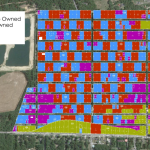COURT HOUSE — State aid to education in the Garden State has been a subject of intense debate for decades. Gov. Phil Murphy came to office promising to fully fund the state’s almost 600 school districts based on the funding formula that has been in place since 2008.
Part of the way that full funding will be paid is through changes to some of the provisions of that earlier legislation that could cost Cape May County school districts a combined $21 million over the next six years.
Background
Following a series of court challenges that claimed the state was underfunding poor, urban districts, Trenton passed the School Funding Reform Act in 2008.
The law established a weighted student formula that would provide a per-pupil amount needed to fund the constitutional mandate that New Jersey students receive a thorough-and-efficient education.
With the advent of the 2008 financial crisis and the coming to office of the Chris Christie administration, the funding guidelines were never met. The state knowingly underfunded the aid dictated by the funding formula.
In addition, counties that stood to lose under the new formula managed to have provisions attached that “held harmless” school districts whose enrollments were declining.
The funding formula floundered with less money than was required and an allocation method that did not meet the objectives of the 2008 Reform Act.
In 2018, a plan to roll out full funding of the formula while simultaneously “modernizing” it to eliminate provisions that kept level funding going to enrollment-challenged districts is presenting some districts in the state with serious multiyear budget problems.
In Cape May County, all but three districts stand to lose over the six years remaining in the roll out of the newly-tweaked formula.
Cape May County Districts
The formula includes a consideration of enrollment, demographics and the local tax valuations.
The demographic information allows the formula to be sensitive to the number of at-risk students and those with disabilities.
Based on 2017-2018 state data, all but three school districts in the county were “overfunded” after years of declining enrollments.
Two, West Cape May and West Wildwood, were funded at close to the proper amount and one, Ocean City, was projected to receive additional state aid over the years of the formula roll out.
Some districts, among them Lower Township, Middle Township, Lower Cape May Regional (LCMR) and Upper Township could see major hits to their state aid over the coming years.
Enrollment at many of the county’s schools has been declining for over a decade. According to its audited financial statements for the year ending June 30, 2017, LCMR has seen a decline from 1,729 students in 2008 to 1,357 students 10 years later, a drop of over 20 percent.
In Middle Township, school board budget presentations have consistently shown that 60 percent of the district’s revenues are based on the local tax levy.
They also make the point that the district is over $2 million below the level of expenditures necessary for “adequacy.” Adequacy is a term used to mean the amount of spending needed to provide the constitutional-mandated “thorough-and-efficient education.”
If the county’s largest school districts must deal with significant decreases in state aid, the program impacts could be devastating.
The realities of the local economies in many of these districts do not hold out the possibility of making up for sizable decreases in state funding through increases in the property tax.
Path to Progress Report
In the midst of the formula changes and projected impacts on state school districts, the New Jersey Economic and Fiscal Policy Workgroup, a group appointed by Senate President Steve Sweeney, published its report calling for, among other things, school district consolidations.
The workgroup recommended that the state consolidate all school districts into regional K-12 districts. The report cited the educational benefits from such consolidation being a more integrated K-12 curriculum.
The potential economic benefits of consolidation were not lost in the report. The report states that school districts with less than 1,000 students cost the taxpayers 10 percent to 15 percent more per pupil than larger districts and are unable to provide a diverse curriculum.
Calls for consolidation of school districts have floundered in the past. Now using some form of administrative consolidation as a way to promote efficiency may have a more receptive audience as districts with declining enrollments consider how to meet the budget gaps created by less state funding.
Regional School Districts
When the Path to Progress report called for school districts’ regionalization it did so in the context of reducing administrative expense. The report states that while the state ranks fourth in the nation in terms of per-pupil spending, only 59 percent of that spending is on instruction. Claiming that the state spends a higher percentage of its budget on support services, including general administration, the report sees room for cost savings through regional districts.
Regional school districts can also be controversial in the manner in which the tax burden is allocated to member communities.
Just a few years ago, the LCMR district went through a protracted struggle with Cape May City because the city saw the formula based on equalized valuation of property was causing it to pay what it considered exorbitant costs for a relatively low number of students.
Considerations of consolidations can bring with them hotly debated issues of tax allocation, school board seats, and overall school district governance.
To contact Vince Conti, email vconti@cmcherald.com.
*****
Historical Timeline Highlights in New Jersey Education Funding
1947 – Article VIII, Section IV of the state Constitution requires that “the Legislature shall provide for the maintenance and support of a thorough-and-efficient system of free public schools.”
1973 to 1976 – Robinson v. Cahill decisions by the state Supreme Court held that the constitutional provision contained in the “thorough-and-efficient” clause required the state to provide equal educational opportunity for all school children.
1973 – Robinson I held that a “system of instruction in any district in the state which is not thorough and efficient falls short of the constitutional command” contained in the education article of the Constitution. It went on to state that the state must “embrace that educational opportunity which is needed in the contemporary setting to equip a child for his role as a citizen and as a competitor in the labor market.”
1981 – The landmark Abbott v. Burke school funding case challenged the state’s funding process, claiming that it fails to adequately fund high-poverty districts, especially in urban areas. Thirty years of Abbott litigation resulted in 21 state Supreme Court rulings.
1998 – Abbott V required universal preschool, as well as a state-funded school construction program.
2008 – The School Funding Reform Act (SFRA) established a “weighted student formula” for both state and local funding. The formula contained a “base cost” which was the per-pupil amount needed to fund the core curriculum. It then added extra funding for at-risk students, limited English proficiency students and students with disabilities.
2009 – State Supreme Court approved the statewide funding formula.
2010 to 2017 – Flat or limited increase funding left many districts at levels that did not allow them to meet the “adequacy” levels established in SFRA. Adequacy involves a methodology to determine the cost of educating students to meet the state’s educational standards.
2018 – Gov. Murphy signs a new school funding bill. The bill promises to “fully fund” New Jersey school districts by 2025. The effort will likely require over $1 billion dollars in new funding by the time it is fully phased in.
2018 – Senate President Steve Sweeney makes public the report from the New Jersey Economic and Fiscal Policy Workgroup he appointed. The report Path to Progress contains education recommendations concerning economic and educational benefits available through consolidation of school districts into K-12 districts. The move would consolidate almost half of the state’s 600-plus districts.
2018 – The new school funding formula eliminates provisions that previously kept a number of school districts from losing funding even when enrollments fell. The change has put about 150 school districts on a path to lose considerable funding as the new formula is phased in.
2018- Projections show all but three of the school districts in Cape May County are on a path to lose a combined $21 million in state aid over the next six years.








